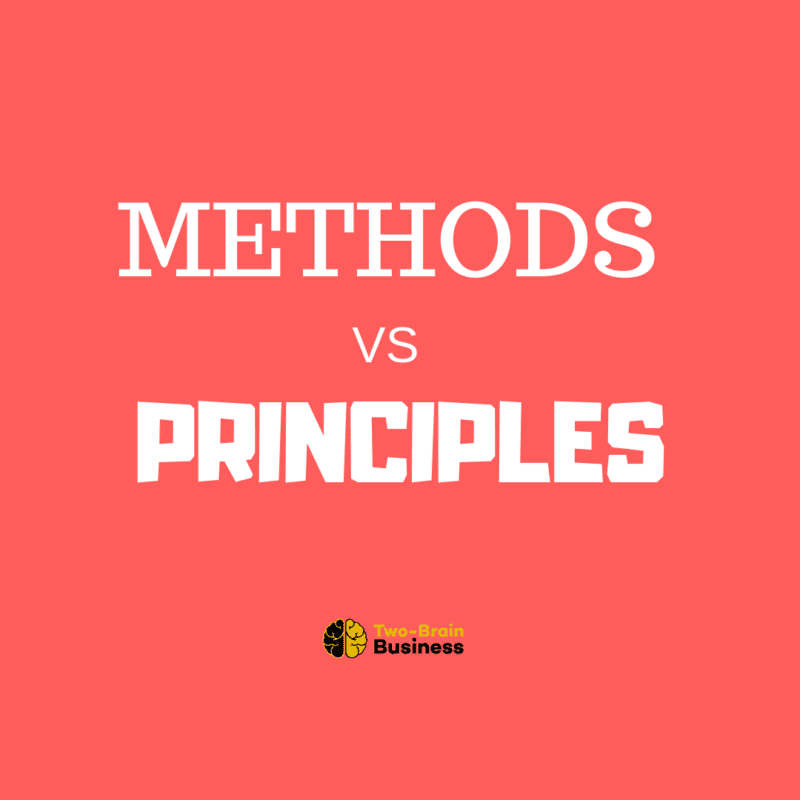By Josh Martin, TwoBrain Mentor
“Methods are many, but principles are few. Methods always change. Principles never do.”
What this means is that principles stand the test of time. Methods can be thought of as how those principles are put into action.
I think that we can all agree on some basic principles:
- clients should be assessed before any training takes place
- nutrition is a vital component to achieving the results someone desires
- recovery is an often overlooked aspect of performance enhancement
Now let’s look at some methods with regards to the above principles:
- Do you perform a movement screen, like the FMS, on all clients? Or do you select something objective you’ve created in-house?
- Paleo, zone, keto?
- Meditation, prayer, sleep, cryotherapy, vibration plate, e-stim, static stretching, cold/hot tub plunges?
When it comes to training clients in your gym, principles are the backbone on which everything else is layered. Being able to hip hinge, squat, press, pull, and carry – these are training principles we can agree are necessary. How you choose to implement each of these are influenced by the methods you choose. Going to a strongman, kettlebell, weightlifting, or CrossFit weekend course – these things are all great tools to go in your tool belt, but they are methods. Not principles.
(In fact, CrossFit is referred to by creator Greg Glassman as a ‘methodology.’ So is the way Westside trains…it’s the ‘Conjugate Method.’)
Here’s the take-home message – if you base what you do with your clients within the context of a method, you become limited. What happens when you don’t have that tool (like a kettlebell, or a barbell) at your disposal? How about if you have a group fitness class with 15 people, the workout on the board calls for rowing 500m every round during a 30 minute workout, and you only have 3 rowers?
When you have a system to fall back on, and fully understand your clients’ goals, you can select the methods that you want and/or that you have access to. It shouldn’t change your ability to achieve results for your client.
Methods are the zoom-in function on a camera. When you are zoomed in, you are hyper focused on a method. When you zoom out, the overall landscape becomes much clearer, freeing you up to let your principles guide your method selection.
The proverb at the top has its roots in a quote wrongly attributed to Ralph Waldo Emerson. Here’s the full quote, by Harrington Emerson:
“As to methods, there may be a million and then some, but principles are few. The man who grasps principles can successfully select his own methods. The man who tries methods, ignoring principles, is sure to have trouble.”
What are your guiding principles?
How are you sharing them with your staff?
How are you sharing them with your clients?

